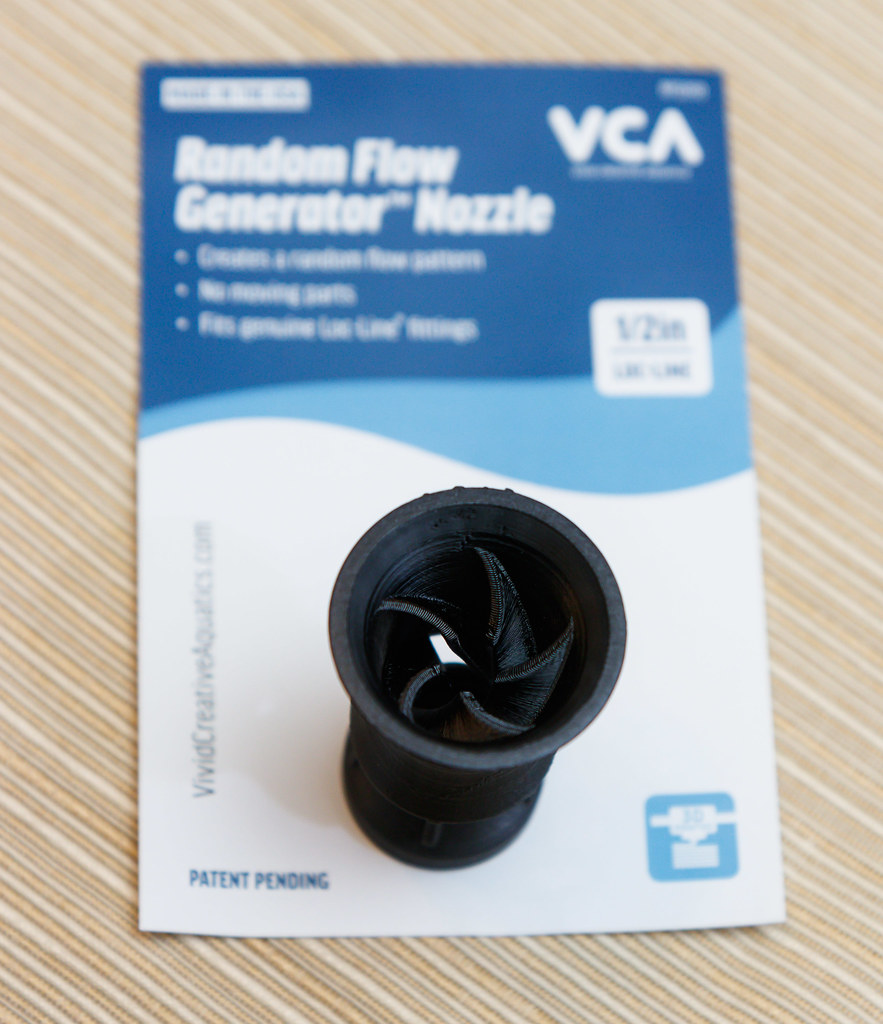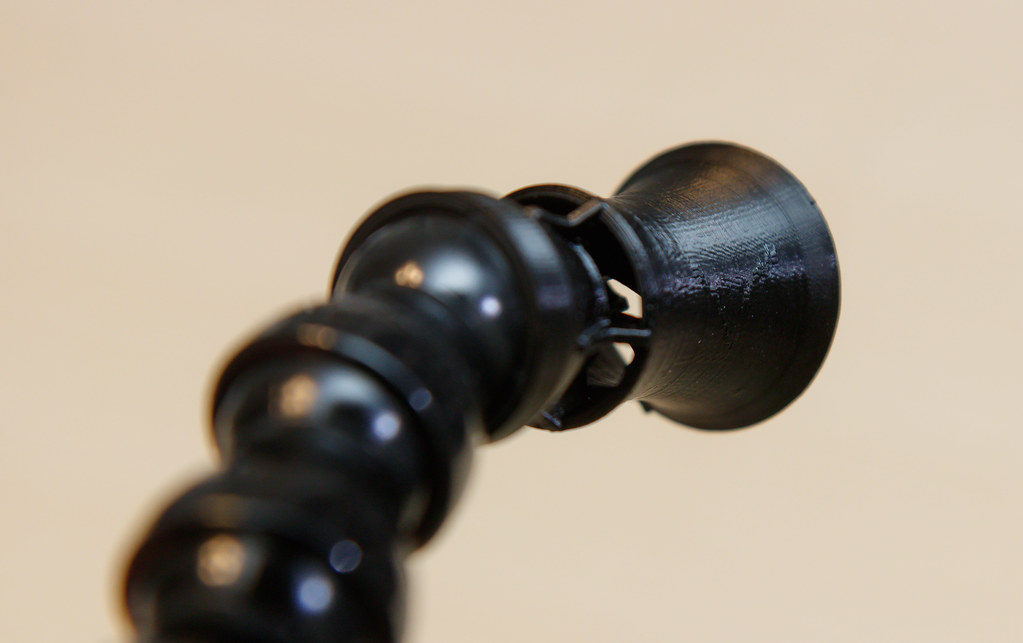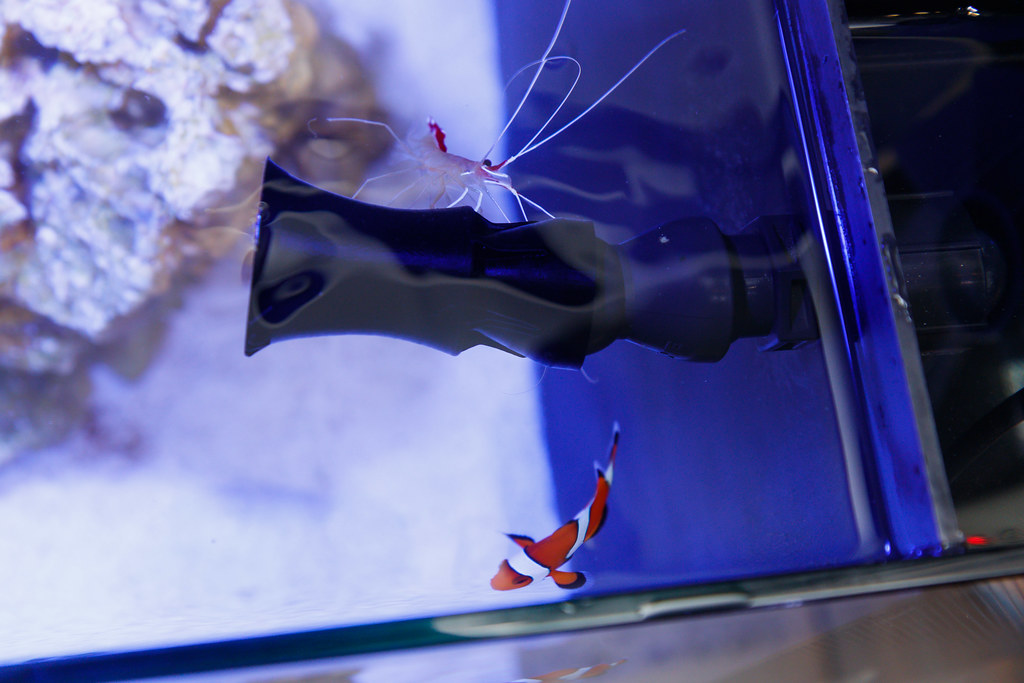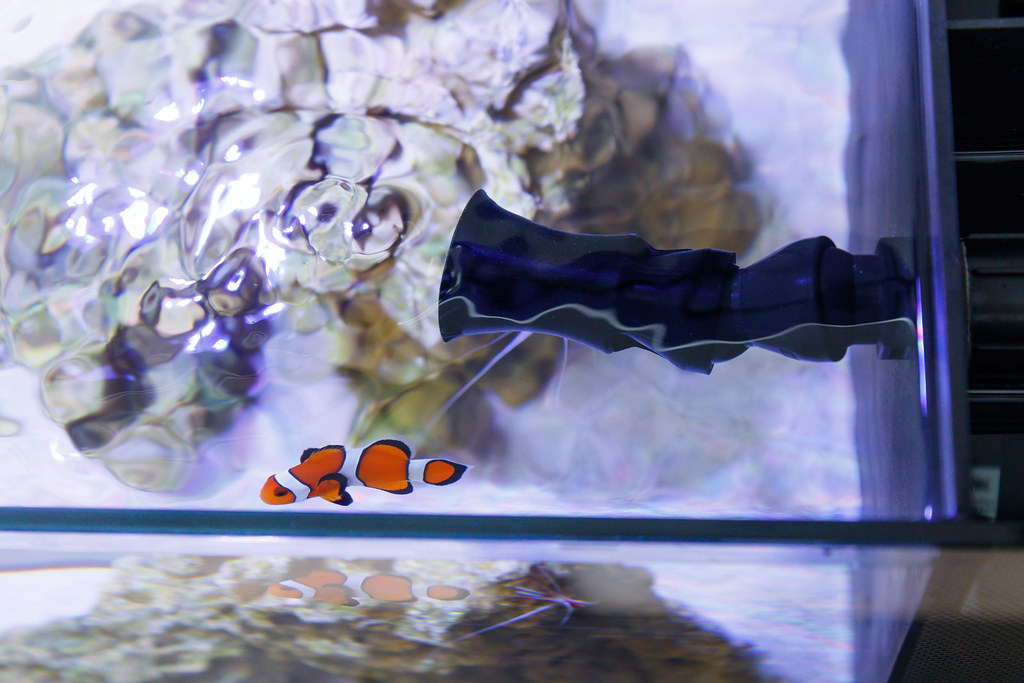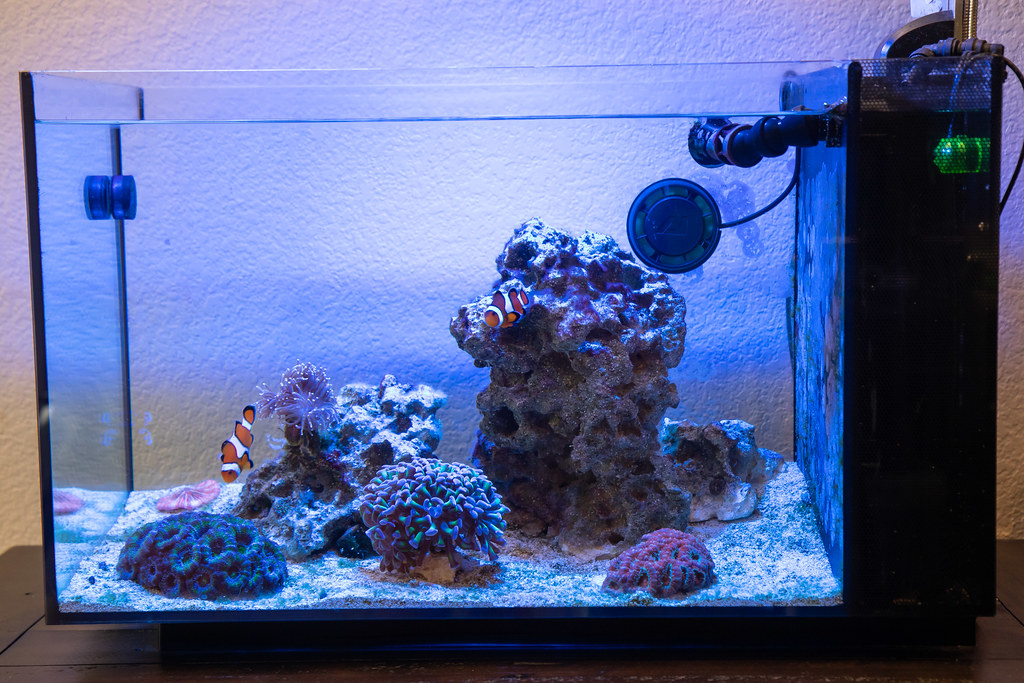One of the first mods I got for our EVO 13.5 saltwater nano is the Vivid Creative Aquatics (VCA) random flow generator. We installed an RFG nozzle on our smaller planted Spec, but there were compromises to how well a random flow generator works on that setup.
VCA’s random flow generator matches the Fluval EVO 13.5 better for several reasons. I’ll discuss what a random flow generator does, why it benefits a reef tank, how to install it, and overall pros/cons.
What Does the Vivid Creative Aquatics – Random Flow Generator Do?
A random flow generator is a style of return (flow) nozzle available for use in the aquarium hobby. Instead of providing a constant stream of flow (from your return pump), a RFG nozzle will create pulses of randomized flow.
It does this with no moving parts. Vivid Creative Aquatics has a writeup on their webpage that describes how their random flow generators work:
“The Random Flow Generator™ Nozzle is the ONLY random flow generating device on the market with no moving parts. The patent pending design uses fluid dynamics to vary both the intensity and direction of the flow, as it exists the nozzle. This means it will never get stuck, stop working or require internal maintenance.”
“The internal structure of the RFG Nozzle is comprised of a 5-vane helix that spirals nearly the entire length of the nozzle with a central jet. Each vane of the helix is connected to an eductor at the base. Together, they form a set of internal channels. These channels along with the center jet, work together to pull the flow in one direction or the other as it exits the nozzle creating he randomization effect.”
You can see the ‘eductors’ on the backside of the nozzle. This is where the magic happens. These inlets, along with the internal shape of the fitting, make flow stall in an alternating manner.
The result is a wonderfully randomized flow from the fitting with no moving parts and no modifications to your return pump.
Why is Randomized Flow Important in an Aquarium?
If you consider how water flows in natural environments (such as streams, lakes, or oceans), flow is rarely constant. It is typically constantly changing in intensity and direction.
Randomized flow for a planted freshwater tank helps ensure CO2 and oxygen transfer occur at all plant surfaces. In a saltwater tank, varying flow helps in a similar way to ensure nutrient transfer to corals.
Random flow patterns also help fish remain healthy and may induce interesting behavior and movements.
Flow changes for any aquarium can help keep detritus from collecting and remain in suspension so it will get captured by the filter media.
VCA Random Flow Generator – How to Install on a Fluval EVO 13.5:
Installation of a VCA random flow generator nozzle on the EVO 13.5 is very straightforward.
The EVO 13.5 comes with a 1/2″ Loc-Line bulkhead fitting. You can remove the stock wye fitting with the 1/4″ nozzles and replace it with the VCA 1/2″ RFG fitting.
Technically, you could put the new nozzle directly on the bulkhead loc-line fitting; however, I’d recommend adding a few sections of 1/2″ Loc-Line to get some additional adjustment capabilities. I used two Loc-Line fittings, and this allows enough adjustment to direct flow anywhere in the tank.
It is also possible to keep the EVO’s dual 1/4″ loc-line setup and install two of VCA’s 1/4″ RFG fittings. However, I don’t recommend this, as the 1/4″ RFG fittings don’t perform as well as the larger nozzles.
If you need an RFG nozzle for a bigger aquarium, they are also available in 3/4″ and 1″ versions.
Performance of the VCA Random Flow Generator on the EVO 13.5:
This random flow generator setup works very well with the EVO 13.5. Unlike what we experienced with the Spec V, there is plenty of flow from the EVO’s return pump to establish the random flow patterns. I think the 1/2″ fitting helps, as the 1/4″ version of the RFG does not induce flow variation as strongly.
The pulses from the nozzle are evident in watching the water surface as well as watching our torch coral’s tentacles change direction. While it doesn’t offer the same variation as a good wavemaker, it’s a great upgrade for the low price and ease of installation.
The fittings are 3D printed, but durability has proven very good. The fitting still fits tight on the adjacent Loc-Line fitting. Cleaning the fitting is easy. I soak in a 1:1 white vinegar and water solution to remove all algae. It’s important to do this occasionally to maintain the flowrate and flow characteristics through the nozzle.
Final Thoughts on the VCA Random Flow Generator for the Fluval EVO:
I’d highly recommend upgrading to the VCA Random Flow Generator for your EVO 13.5.
The cost of $21 USD is very reasonable. It might be a bit pricy, given it is just a 3D printed part, but it has proven to be a good performer and has caused no issues in over three years of service.
The only downside is the 1/2″ fittings are slightly large for the small scale of a nano aquarium. However, it is not that noticeable and probably comparable to the stock fittings for visual impact.
It would also be nice if Vivid Creative Aquatics would throw in a few sections of 1/2″ Loc-Line for those who don’t have any fittings on hand. Overall, it’s an excellent upgrade – I highly recommend it for the EVO and any other aquarium that utilizes Loc-Line return fittings.



